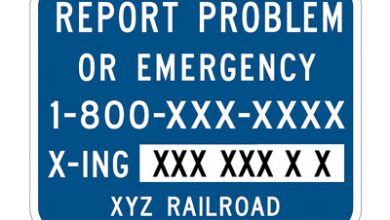10 Essential Tips to Save Money on Auto Insurance Without Sacrificing Coverage

Auto insurance is a necessity for every driver, providing a safety net in case of accidents, theft, or damages. However, the rising costs of auto insurance can put a strain on your budget. Finding ways to save on premiums while maintaining adequate coverage is possible and can offer both financial relief and peace of mind. Fortunately, with some strategic decisions and adjustments, you can enjoy significant savings without sacrificing the quality of your coverage.
In this article, we’ll go through ten essential tips to help you save on auto insurance, covering practical advice that anyone can implement. By following these tips, you’ll gain insights into choosing the right deductible, exploring discounts, understanding coverage types, and more. Let’s dive in!
Tip 1: Shop Around and Compare Quotes
One of the best ways to save money on auto insurance is to shop around and compare rates from multiple providers.
- Why It Matters: Each insurance company uses its own criteria to calculate premiums, so rates can vary significantly. Some companies may offer lower rates due to specific partnerships, while others may have discounts based on your driving history or vehicle type.
- How to Do It:
- Use online comparison tools to get quotes from various insurers.
- Contact companies directly for personalized quotes, especially if you have special circumstances, like a high-value vehicle or a new driver in the household.
- Compare not just the prices but also the coverage levels to ensure you’re getting the best value.
Tip 2: Opt for a Higher Deductible
Choosing a higher deductible can lower your monthly premium substantially.
- Why It Matters: A deductible is the amount you pay out of pocket before your insurance kicks in. Higher deductibles mean lower premiums because the insurer pays less in the event of a claim.
- How to Do It:
- Calculate how much you can afford to pay if you ever need to make a claim.
- Consider increasing your deductible to a level that you’re comfortable with, such as from $250 to $1,000, which can lead to substantial premium savings.
- Keep a savings fund for emergencies so you’re prepared to cover the deductible if needed.
Tip 3: Bundle Your Policies
Many insurers offer discounts if you bundle multiple insurance policies, such as auto and home insurance, with the same company.
- Why It Matters: Insurance companies reward customers who bring them more business by offering multi-policy discounts, sometimes saving you up to 25% on your premiums.
- How to Do It:
- Contact your current insurer to inquire about bundling options and potential savings.
- Compare the combined costs of bundled policies from different providers to find the best deal.
- Ensure that bundling doesn’t lead to a compromise in coverage; confirm that both policies meet your needs.
Tip 4: Maintain a Clean Driving Record
Your driving history is one of the most significant factors insurers use to determine your premium.
- Why It Matters: Drivers with a history of accidents or traffic violations are seen as higher risk, leading to increased premiums. By avoiding accidents and violations, you position yourself for lower rates.
- How to Do It:
- Practice safe driving habits, such as observing speed limits, using turn signals, and avoiding distractions while driving.
- Take defensive driving courses, which may earn you a discount and help you stay alert on the road.
- Check your state’s point reduction programs, as some allow you to reduce points on your driving record by completing certain classes.
Tip 5: Look for Available Discounts
Insurance companies offer a wide range of discounts that can lower your premium.
- Why It Matters: Discounts are an easy way to reduce your insurance costs, yet many drivers don’t know all the options available.
- How to Do It:
- Ask your insurer about potential discounts for safe driving, good grades (for students), low mileage, or membership in certain organizations.
- Check for discounts on anti-theft devices or vehicles with advanced safety features like automatic braking or lane-departure warnings.
- Review your policy regularly to ensure you’re receiving all the discounts for which you qualify.
Tip 6: Drive a Car That’s Cheaper to Insure
The type of car you drive significantly affects your insurance rates.
- Why It Matters: Insurance companies calculate premiums based on repair costs, safety ratings, and theft statistics of different vehicles. Typically, cars with high safety ratings and low repair costs are cheaper to insure.
- How to Do It:
- Before purchasing a new car, research its insurance costs by getting quotes for the make and model you’re interested in.
- Consider opting for a mid-range or older vehicle, as these are often cheaper to insure than luxury or sports cars.
- Check the vehicle’s safety ratings and features, as these can help reduce insurance costs.
Tip 7: Limit Your Annual Mileage
Low-mileage drivers often qualify for discounts since they pose a lower risk of accidents.
- Why It Matters: Insurers reward drivers who don’t spend a lot of time on the road since lower mileage decreases the likelihood of accidents.
- How to Do It:
- Carpool, use public transportation, or consider walking or biking for short trips to reduce your mileage.
- Track your mileage and provide it to your insurer if they offer a low-mileage discount.
- Enroll in a usage-based insurance program that monitors your driving habits and mileage, potentially resulting in further discounts if you drive infrequently.
Tip 8: Improve Your Credit Score
In most states, insurers use credit scores as a factor when calculating auto insurance premiums.
- Why It Matters: A higher credit score generally indicates financial responsibility, making you a lower risk for insurers, which can lead to lower premiums.
- How to Do It:
- Pay your bills on time, reduce debt, and avoid opening new credit accounts unless necessary to improve your credit score.
- Monitor your credit report for errors, which can negatively impact your score, and dispute any inaccuracies.
- Check with your insurer about the impact of your credit score on your policy and review any potential for savings by improving it.
Tip 9: Consider Usage-Based Insurance
Usage-based insurance (UBI) programs calculate premiums based on your actual driving habits, using telematics technology.
- Why It Matters: UBI programs monitor factors like mileage, speed, and braking patterns. Safe drivers can enjoy significant savings since premiums reflect their low-risk driving behavior.
- How to Do It:
- Ask your insurer if they offer a UBI program, often called pay-as-you-drive or pay-per-mile insurance.
- Carefully review the terms to ensure the program aligns with your driving habits. If you drive infrequently and practice safe driving habits, UBI can be an excellent option.
- Use UBI as an opportunity to improve your driving habits, as some programs offer additional discounts based on your driving score.
Tip 10: Review and Adjust Your Coverage Regularly
Your auto insurance needs can change over time, so periodically reviewing your policy ensures you aren’t paying for unnecessary coverage.
- Why It Matters: Many people continue paying for coverage they don’t need, such as comprehensive coverage on an older car, leading to unnecessary expenses.
- How to Do It:
- Assess your coverage needs annually, especially after significant life changes like a move, job change, or vehicle purchase.
- Consider reducing collision or comprehensive coverage on older vehicles, as their value may not justify the cost of full coverage.
- Discuss with your agent to ensure your policy matches your current needs, potentially adjusting liability limits or coverage types to better suit your situation.
Conclusion
Saving on auto insurance without sacrificing coverage is all about being informed and proactive. By following these ten essential tips, you can lower your premiums while ensuring that you remain adequately protected. Shopping around, increasing your deductible, maintaining a clean driving record, and regularly reviewing your coverage are just a few ways to maximize your savings without compromising on quality. Remember, the right policy not only offers financial protection but also peace of mind every time you get behind the wheel.
Adjusting your auto insurance to better fit your needs doesn’t have to be complicated. Implement these strategies today to start saving and keep your coverage in line with your driving habits and financial situation.



